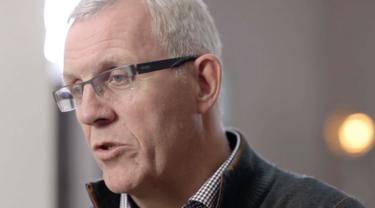Guy Nelson is CEO of Empire Industries and its subsidiary, Dynamic Structures. Based in Port Coquitlam, B.C., Dynamic Structures specializes in designing and building large-scale, complex mechanical systems, including advanced amusement park rides and large optical telescopes.
Learn more about Dynamic Structure’s export success here.
When and where was your first export sale?
In 1975 we were contracted to build the enclosure for the Canada France Hawaii Telescope in the U.S. Since then, we have designed, manufactured, and installed more than half the world’s large optical telescopes.
On the (Dynamic Attractions) ride side of the business, we designed and built the steel track and switches for Disney’s Test Track ride system at Epcot in Orlando, Florida in 2000. Since then we have contracted more than $500 million of ride system exports around the world, interestingly, none of which were in Canada.
How did the Disney opportunity arise?
The ride system contract was really serendipitous because we were approached by a person who switched from being a (Dynamic Structures) telescope customer to Disney, and he knew our structural and mechanical skills were world-class and could help solve a design challenge Disney had with one of its ride systems.
What was the biggest challenge when you started exporting?
I would make the distinction between exporting to U.S. customers, such as Disney and Universal, which is a unique challenge in its own right, and the challenges that arise from less experienced customers around the world.
Working for non-Disney and Universal customers requires a ton of experience, patience, and working capital to sustain the effort.
How many countries are you exporting to, and what are your key markets?
We export to the U.S., China, Malaysia, Japan, United Arab Emirates, South Korea, France, Macau, Hong Kong, Qatar, and Russia.
What percentage of your sales come from exports?
It will be up to 95 per cent in our 2017 budget, up from 86 per cent in 2016. At the end of 2016, the Board of Directors decided to discontinue steel fabrication for third parties in Canada, a business we had been in since 1926. We are in the process of shrinking our steel fabrication capacity to what is needed to support the fabricated steel that goes into some of our ride systems.
Where do you see your best growth opportunities?
Leveraging our increasing amount of patented intellectual property (IP) in ride systems and our world-class experience to turn them into attractions.
We will also focus on capitalizing our company to retain an ownership position in its ongoing use in the entertainment business.
Disney and Universal and a couple other first class customers have aggressive expansion plans and we plan to continue to support their ride system needs, which tend to be the biggest technical challenges in the industry.
When you look back at your export experience, what do you know now that you wished you knew when you started?
There are lots of inexperienced customers in the theme park business who say they want to purchase the best rides money can buy, but in point of fact, they can’t afford it because their domestic market or lack of leverageable IP does not drive the operational revenue to afford it. These are what I would call Disney and Universal “wannabes.”
What would you say is the number one thing that new SMEs need to know before they enter the export trade?
It is not for the faint of heart. There are a lot of balls to juggle such as currency fluctuation between the time of contract execution to the time of payment, delay of payments and the impact on increasing working capital to run the business, the financial and human cost of supporting operations around the globe, competition, cultural nuances throughout the bidding, negotiating, and execution phases of every project.
Avoid exporting commodity products. This is the area where differentiation from the completion is difficult and tends to revert to price only. We make the best rides in the world and the biggest telescopes in the world and quite frankly, price is but one of many considerations our customers have to deal with. It tends to be: can they afford it or do they want to buy a less compelling product from a competitor?





